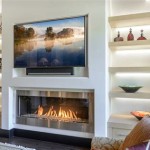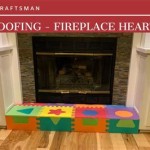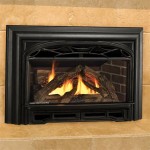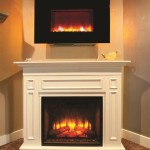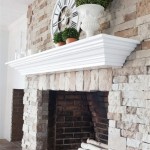How To Remove Sliding Fireplace Doors
Sliding fireplace doors, while often aesthetically pleasing and offering a degree of safety, may need to be removed for cleaning, repair, or replacement. The removal process, although generally straightforward, requires careful attention to detail to avoid damaging the doors, the fireplace surround, or oneself. This article provides a comprehensive guide to safely and effectively removing sliding fireplace doors.
Before initiating the removal process, it is crucial to gather the necessary tools and materials. A Phillips head screwdriver, a flathead screwdriver, work gloves, safety glasses, and a soft blanket or padding are typically required. The blanket or padding serves to protect the doors during removal and storage, preventing scratches and other damage.
The first step involves a thorough inspection of the door mechanism. Identifying the type of track and locking system employed in the design is paramount. Some doors are secured by screws, while others utilize spring-loaded mechanisms or pressure fittings. Understanding the specific attachment method will dictate the appropriate removal technique.
Identifying the Attachment Mechanism
A close examination of the upper and lower tracks of the sliding doors will reveal the points of attachment. Begin by looking for visible screws along the top or bottom edges of the door frame, or within the tracks themselves. These screws, if present, often secure the doors to the fireplace surround or to internal locking mechanisms. If screws are found, use the appropriate screwdriver to carefully loosen them. It is advisable to keep the screws in a labeled container to facilitate reinstallation.
If no screws are readily apparent, the doors may be held in place by spring-loaded mechanisms. These mechanisms typically involve a spring-loaded pin or clip that engages with a corresponding hole or notch in the track. To release the door, it may be necessary to gently push or pull on the door while simultaneously manipulating the spring-loaded component. Pay close attention to the direction of movement required to disengage the mechanism.
Another possible attachment method involves pressure fittings. In this scenario, the doors are held in place by friction and tension. Removing these doors typically requires lifting or tilting the door to relieve the pressure. This method is often employed in simpler, less expensive fireplace door designs.
Documenting the attachment mechanism with photographs or notes can be beneficial, especially if the doors are being removed for an extended period or if the removal process is interrupted. This documentation can serve as a valuable reference during reinstallation.
Once the attachment mechanism has been identified and understood, the actual removal process can begin. Exercise caution throughout the process to prevent injury or damage.
Removing Doors Secured by Screws
If the doors are secured by screws, the removal process is relatively straightforward. After loosening all visible screws, gently lift the door upward, if possible. Some designs require the door to be lifted over a lip or ridge on the lower track. If the door cannot be lifted directly, try sliding it to one side to disengage it from the track.
Once the door is free from the track, carefully remove it from the fireplace opening. It is advisable to have a helper assist with this step, especially for larger or heavier doors. Place the door on the prepared blanket or padding to prevent scratches or other damage.
Repeat the process for the remaining sliding doors. Ensure that all screws and hardware are collected and stored in a labeled container to prevent loss.
Inspect the tracks for any remaining debris or obstructions. Clean the tracks thoroughly with a damp cloth or brush. This will ensure smooth operation during reinstallation.
If the screws are stripped or damaged, they may need to be replaced. Matching the size and thread pattern of the original screws is crucial for a secure and proper fit.
Prior to reinstalling the doors, consider applying a small amount of lubricant to the tracks. This will further improve the sliding action and reduce wear and tear on the doors and tracks.
Removing Doors Secured by Spring-Loaded Mechanisms or Pressure Fittings
Removing doors secured by spring-loaded mechanisms or pressure fittings requires a slightly different approach. Locate the spring-loaded pins or clips, typically found on the top or bottom of the door frame. Using a small flathead screwdriver or similar tool, gently depress or manipulate the spring-loaded component while simultaneously lifting or tilting the door.
The goal is to disengage the pin or clip from the corresponding hole or notch in the track. This may require some finesse and coordination. Avoid using excessive force, as this could damage the mechanism or the door frame.
Once the spring-loaded mechanism is disengaged, carefully lift or tilt the door out of the track. As with screw-mounted doors, it is advisable to have a helper assist with this step, especially for larger or heavier doors.
If the doors are held in place by pressure fittings, the removal process typically involves lifting or tilting the door to relieve the pressure. Try lifting the door straight up, if possible. If this does not work, try tilting the door forward or backward while simultaneously lifting. This should dislodge the door from the track.
Pay close attention to the orientation of the doors during removal. Note which door slides in front of the other. This will ensure proper reinstallation.
After removing the doors, inspect the spring-loaded mechanisms or pressure fittings for any signs of damage or wear. Replace any damaged components before reinstalling the doors. Clean the tracks thoroughly to remove any debris or obstructions.
Regardless of the attachment method, it is crucial to exercise patience and avoid using excessive force. If the doors are difficult to remove, double-check the attachment mechanism and ensure that all screws, pins, or clips have been properly disengaged. Forcing the doors can result in damage to the doors, the fireplace surround, or oneself.
Once the doors have been successfully removed, store them in a safe and secure location. Protect them from dust, moisture, and physical damage. If the doors are being stored for an extended period, consider wrapping them in protective material, such as bubble wrap or moving blankets.
Before reinstalling the doors, ensure that the fireplace surround is clean and free of any debris. Inspect the tracks for any signs of damage or wear. Replace any damaged components before reinstalling the doors.
Reinstallation is essentially the reverse of the removal process. Carefully align the doors with the tracks and re-engage the attachment mechanism. Ensure that all screws, pins, or clips are properly secured. Test the sliding action of the doors to ensure smooth and effortless operation.
If the doors are difficult to slide, consider applying a small amount of lubricant to the tracks. Avoid using excessive lubricant, as this can attract dust and debris.
By following these steps, it is possible to safely and effectively remove and reinstall sliding fireplace doors. Remember to exercise caution throughout the process and to seek professional assistance if necessary.
The safety of the individual performing the removal is paramount. Always wear safety glasses to protect the eyes from debris and work gloves to protect the hands from sharp edges or rough surfaces. If the fireplace doors are particularly heavy or awkward to handle, enlist the help of another person to avoid strain or injury.
Consider consulting the manufacturer's instructions for specific removal and installation guidelines. These instructions may provide valuable insights into the unique features of the fireplace doors and the recommended procedures for their removal and reinstallation.
Regular maintenance of the sliding fireplace doors can prolong their lifespan and ensure smooth operation. This maintenance may include cleaning the tracks, lubricating the moving parts, and inspecting the hardware for any signs of wear or damage.

How To Remove Fireplace Doors And Frame

How To Remove An Old Fireplace Surround Merrypad

How To Remove An Old Fireplace Surround Merrypad

How To Remove Fireplace Mesh Curtain Diy Door Replacement

How To Remove Fireplace Doors And Frame

How To Remove Fireplace Doors And Frame

Replacing Prefab Fireplace Doors Avoid These Problems

How To Remove An Old Fireplace Surround Merrypad

Fireplace Doors Mechanical Problems Chimneys Com

How To Remove And Clean Glass Fireplace Doors

